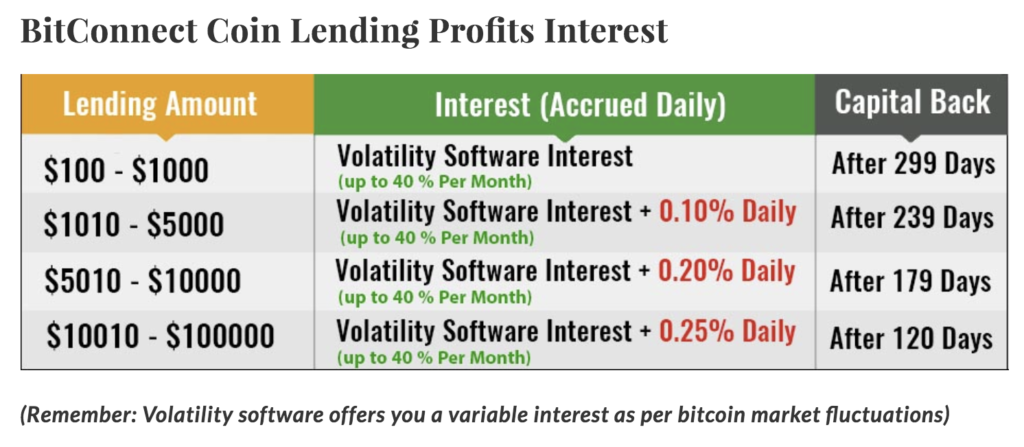The Gartner Group is widely credited with formulating the “Hype Cycle”, a trend curve that is said to model the adaptation of a new technology or paradigm.
Simply put it looks like this:

It certainly seems to have held sway regarding the Internet revolution, where the Peak of Inflated Expectations culminated in the Nasdaq blow-off-top of 2000 and the ensuing “Tech Wreck” crash. I remember that well, for a number of reasons including that my co-founders and I were still in “start-up” mode with our company, easyDNS. I remember profoundly misunderstanding what was happening in those final few months.
I remember thinking, literally “this is an entirely new economy, it’s not about running profitable businesses anymore, it’s about running up your stock price.” There was a Sun Microsystems commercial that was near music video length, set to the soundtrack of the iconic rock track “Hocus Pocus” whose sole call-to-action at the end of the ad was the “SUNW” ticker symbol. And then it all imploded. That was when I started seriously learning about economics, history and finance.
I remember sitting in a diner one night having a coffee with a friend, mere months before the crash. Bullshit .COM’s were getting funded all over the place and everybody else, except me it seemed, were becoming millionaires overnight.
“I suppose if we hit the jackpot and got rich tomorrow, I’d probably think I was a master of the universe and crash and burn with drugs and booze”, I conceded (having recently gotten clean and sober). He said “For that reason alone it’s probably best for you if you don’t become wealthy until your sobriety can handle it.” Then he told me the story of the Roman Triumphs, which I never knew about beforehand.
When a Roman consul returned home after a particularly spectacular military campaign abroad, a “Triumph” was held – which was a parade through the streets Rome celebrating his accomplishments. But there was an additional component that (as it was told to me then), a slave would be put in the chariot beside the consul, who’s sole job throughout the Triumph was to whisper into the victorious leader’s ear “Remember, thou art mortal”.
I’ve never seen an original source for this, it’s been attributed to Julius Caesar, to Tiberius and to Marcus Aurelius. Or it’s possibly even apocryphal – but one thing I know for sure, there was nobody nearby whispering “Remember, thou art mortal” to any crypto-millionaires over the course of 2017.

This is the “gotcha” peculiar to success and good fortune. The illusion of invincibility. Infallibility. Omnipotence. It can happen to individuals and it can happen at a collective, archetypal or sub-cultural level.
When I sat down to finally write this (I went on record saying this would be the year Bitcoin enters the Trough of Disillusion on New Year’s Day) and researched a bit, I found that “The Trough of Disillusionment” for Bitcoin has been called almost as often as the Bubble Top was over this unprecedented price run since Bitcoin’s inception.
The similarities between the DotCom top and 2017/December were striking.
The “ICO Craze” were the pets.com and boo.com’s of the day. I honestly don’t understand most ICO models: they’re not equity. You’re not getting a piece of the company, and they’re not debt, so there’s no yield. They’re for the most part utility tokens. Many with the flimsiest utility value. I mean if you’re going to shoehorn a utility token representing a banana into an ICO and raise funds selling them, people are going to buy them because they think what? That the price of bananas is going to moonshot? It doesn’t make any sense.
I understand the “kickstarter” analogy to ICOs, people want what you plan to create and they fund you by prepaying it, ok that part I get. But why am I, as an investor going to buy a given utility token unless I plan to consume a lot of your utility. Looked at this way, Basic Attention Token (BAT) makes sense if one has high hopes for the Brave browser (as I do) and wants to be in a position to participate in that ecosystem early. I also understand the impetus toward “tokenization” which I credit Adam Levine at Tokenly for seeing it coming early.
But in 2017 all that devolved, rapidly, into a bullsh*t money raising racket. It reflected badly on much of the space and to mainstream commentators it made everybody in it look like charlatans and hucksters.
Then there were the Ponzis
I hadn’t heard about Bitconnect until the day they shut down (exited?) But anybody who went through the Digital Gold Currency (DGC) era who looked at Bitconnect would have instantly recognized it as a “High Yield Investment Program” a.k.a “HYIP”. We got wise to those early enough in the days when easyDNS was accepting e-gold to specifically ban them from our service. In this incarnation they are being touted as “Crypto Lending Programs”. Make no mistake…

…as soon as you see “daily interest” you know you’re dealing with a HYIP. Especially after 10 years of ZIRP and NIRP, anybody who is guaranteeing you 40% interest per month is running a ponzi.
Apparently bitconnect resurfaced long enough to float (get this), an ICO….

But seem to be gone again. There are more out there.
Probably everything listed in this site is a ponzi. If it says “daily interest”, it’s a ponzi, if it says “guaranteed” it isn’t.
If you have any funds in any of those sites and they are still up and running, stop what you are doing, and go cash out, at any price, right now.
Why This Time May Have Been “The Secular Top”
When people get excited about something, and I’m as guilty as anybody of succumbing to this, they tend to get myopic about it.
Example from outside the space: During the heyday of the domain name aftermarket, the “Tea Party” political movement in the US started looking like it was picking up steam and people speculated that the rock band from Windsor, Ontario, “The Tea Party“, who owned “TeaParty.com” were about to become very rich selling their domain name. (They ended up not selling it and they still operate from there to this day).
This was back when .com’s could still sell for millions. Here we were heading into the 2012 election cycle with a “dark horse” political movement coming out of left field (sorry, I guess that would be right field) and the domainers were enthusiastically predicting outlandish valuations for the domain name. I can’t find the thread now but one prognosticator was putting a value of 1 billion dollars to the name.
That was plain delusional, but a good example of what happens to the mind under the spell of an asset-bubble induced tunnel vision. At the time I did some searching and realized that valuing a single domain name at $1 billion would have exceeded the total cost of an entire presidential campaign run by 2X or 3X. That’s when you know your price targets are out of whack.
So look at 2017.We have Bitcoin starting the year with a 10 – 15 Billion dollar market cap, and then pulling into December well north 100 billion, 200 billion, 300 billion! While the total crypto-currency space peaking at close to 750 Billion, that’s three-quarters of a trillion dollars.
What felt different about this spike high was that this time was the first time that Bitcoin fever truly broke outside of the crypto-currency space and out into the wider public consciousness. Sure, people were hearing about it before, but this time, people were getting pulled in.
For months leading up to December all anybody wanted to talk to me about was Bitcoin. Most of them didn’t even know I was “into Bitcoin”, just that I was a technology guy. In December it got manic. A friend of a friend got my cell number and called me wanting to meet up and literally hand me a briefcase of cash for some bitcoin, right now! I was getting emails from people I hadn’t heard from in years wanting to hire me for consultations on getting into Bitcoin.
It’s about the technology, not the price
At the time I wrote “This time is Different”, Part 1 & Part 2 I did try to stress that what was exciting and revolutionary about Bitcoin was the technology and disruptive ramifications moreso than the price action. I admit I was being dismissive of the price action, and not fully cognizant of the spike-high/bubble aspect until it seemed to reach a crescendo in December.
Then after correspondence with Mike Swanson of WallStreetWindow, who I’ve been following for a long time (over a decade) I realized that yes, he was probably right that this was a blow-off top. Mike is more skeptical of the underlying technology than I am, hell, I’m a believer, he isn’t. But I was also a believer in internet technology – I owe my livelihood to it – and know from experience that technology revolutions do go through these cycles.
The big question then remains: Is this really a technology revolution going through this Hype Cycle? Or is it e-gold and Digital Gold Currencies of yesteryear, which showed promise but ultimately went bust?
I think it’s the former, in fact I’m almost certain of it for many reasons. Bitcoin has demonstrated that anti-fragility, no matter how badly it gets mangled or maligned, it’s that “honey badger” of technologies and it just keeps marching forward and coming back stronger than ever.
When Mt Gox crashed I said it was a victory for the space precisely because there was no central authority, it put everybody on notice that the Saviour State wasn’t going to step in and clean up our messes, and that meant that people had to do real honest due diligence and they had to take personal responsibility for their actions.
It’s the exchanges that are still the Achilles Heel of all this. Those are the choke points for getting into or out of the crypto space and over this last stage of the blow-off they did not fare well. Freezes on new accounts were one thing, but freezes on withdrawals are another and there have been rumours that some exchanges were using new deposits to cover withdrawals.
Exchanges are allowing margin trading. Even if your personally eschew margin, keeping your funds in an exchange that is allowing margin trading may see your balance being de-facto rehypothecated. If any meaningful portion of the participants move toward the exits at a given time that can be a huge problem.
The structural design of the exchanges and the overall governance systems of the coins themselves will need to step up to the next level in order for the space to ascend that “Slope of Enlightenment” and attain the “Plateau of Productivity”.
All of these bullsh*t ICO’s, sh*tcoins and ponzis need to be cleared out, the exact same way pets.com, boo.com and all those other dot bombs had to be cleared out as well. That sets the stage for…
What happens next:
(a.k.a “what a secular bear market in crypto-currencies might look like)
We’re constrained by the minuscule time crypto-currencies have been in existence, so my thoughts are drawn via inferences from history outside the space.
My working theory right now is that a secular bull market in crypto-currencies from 2008 to 2018 has completed. That’s a 10 year bull market and probably the highest yielding bull run of any asset in history. Even if Bitcoin drops 80% from here (call it from ~ $9,500 USD/BTC down to ~ $1,900 USD/BTC) then Bitcoin would still be up 90% from a year ago. That still just boggles my mind. By comparison, the S&P500, in the same year went to all-time highs with a gain of 18%.
If Bitcoin et al are, to quote Vitalik Buterin “are a fundamentally new class of cryptoeconomic organisms” – in other words, a new asset class, then I would expect them to display the characteristics that all other assets display:
Cycles:
Secular ones, counter-cyclical ones. In stocks and commodities, a secular bull market can last 8 to 20 years. Secular bears are typically shorter, they can last 3 to 8 years but there have been some that lasted 20 years and even more (Japanese equities, nearly 30 years in…).
Keep in mind that secular bear markets don’t just fall downward for their entire length, they go sideways and whipsaw everybody until capitulation or some other form of maximum pessimism occurs. And to be absolutely clear here: I don’t think we are anywhere close to capitulation or maximum pessimism in the Bitcoin space.
If you want to know what a “bottom” looks like, take a look at, say… gold, which has been going up for two years, is universally despised, and even most goldbugs still think it’s going to “crash”.
From experience: bear cycles go deeper and last longer than anybody, especially me, suspects. I have personally and notoriously been “too early” calling bottoms of gold bears since 2003. Possibly profitable advice would be: wait until I call for a bottom in Bitcoin and then wait another year (buy a truck, and then after a year, back up that truck).
Mean Reversion:
Anybody who thought Bitcoin was just going to keep going, straight-up, forever was doing themselves and their readers a disservice. I am not looking forward to seeing John McAfee “eat his own dick” come 2020 when Bitcoin isn’t $1,000,000/per.
It’s tough to gauge what a rational mean would be for Bitcoin since it’s only been around for 10 years. There is also the observed phenomenon that the counter-cyclical trends in Bitcoin seem to be compressed, and occur at a faster pace. How can anybody know for sure what to expect in terms of a counter-cycle bear in terms of length and duration?
The other problem with something that has gone up this much, this fast for so long is the corollary of mean reversion which is
Mean Overshoot:
It’s not that some asset gets ahead of itself and spikes away from the mean, then blows off the top and comes off back to the mean. No sir, it overshoots the mean, many say to the same degree the spike got ahead of the mean is the degree to which the counter-move will overshoot below the mean.
 If this is the case here I would be looking for lower lows than what we are experiencing here, so low to bring about capitulation and maximum pessimism. Remember when Businessweek magazine ran that famous “Death of Equities” cover in 1979? (Three years ahead of the 1982-2000 bull market?), we’d need to see a “Death of Bitcoin” cover story on Bitcoin Magazine. (No, not the Economist or NYT or some publication that wants to see this stuff die, it has to be from something within the space. That’s maximum pessimism.)
If this is the case here I would be looking for lower lows than what we are experiencing here, so low to bring about capitulation and maximum pessimism. Remember when Businessweek magazine ran that famous “Death of Equities” cover in 1979? (Three years ahead of the 1982-2000 bull market?), we’d need to see a “Death of Bitcoin” cover story on Bitcoin Magazine. (No, not the Economist or NYT or some publication that wants to see this stuff die, it has to be from something within the space. That’s maximum pessimism.)
Remember, we could lose another 80% from where we are today and still be roughly double over last year. In my mind that leaves an enormous amount of downside.
On the upside, there’s a lot of overhead resistance, and that will be there for a long time. I think what differentiates this spike high from the previous ones over the years was the overall lack of public participation in Bitcoin. It was still a curiosity for outsiders, so the people taking the losses were the ideologically committed HODLers. That isn’t the case now.
Finally, when all this turns around (price wise), if this really is a new asset class (like stocks, or bonds or commodities) then in the next bull cycle what often happens is
Change of leadership
That means next time up it may not be Bitcoin leading the way. It could be Ethereum, it could be some other Bitcoin derivation, or possibly something that doesn’t even exist yet. (/me *ducks*)
If I’ve learned one thing from Mike Swanson in my years of following him, it’s that successive bull markets are led by different components than the previous one. In days gone by it was the “Nifty 50”, during the the Nasdaq Bubble was the .COMs’, today most of the companies that led the .COM boom don’t even exist anymore and it’s all about the FANGs. When the stock market cycles again there will be different leadership.
If cryptos are indeed an asset class unto themselves, then I would expect a similar phenomenon to play out.
What to do about it
If you listen to Lets Talk Bitcoin (which easyDNS sponsors), they frequently say to invest in the skills and the technology not the price. Don’t spend your money on “investing” in crypto-coins, spend it on learning how to work within this still emerging technology (programming, business, law, whatever) and either develop income streams that earn crypto-currency, or figure out a way to add these streams to your existing business. This has always been my preferred way of accumulating crypto-currency (and before that DGCs) and we’ve never regretted it.
Remember the tech wreck – easyDNS enjoyed it’s fastest growth rate in the years immediately following the dotcom bust. If I’m right about any of this, and if you are serious about this space, then believe it or not you’re actually in the sweet spot.
Now is the time to hone your skills, now is the time to adapt your business to this new technology if you haven’t already. No you don’t have to regret “missing out”, if I’m right then nobody is going to experience FOMO for a very long time – and that’s the quiet period you can turn to your advantage.
Lastly, get and read Nick Gogarty’s “The Nature of Value”, it does a masterful job examining the distinct phases technology transitions go through and why the first couple phases usually end in disaster for asset allocators anyway and why the best thing you can do is take a step back and wait for an emerging space to finish going through the mania phase.
This is the Trough of Disillusionment, where the “get rich quick” people throw in the towel and move on while the serious builders and innovators get down to business.


Bitconnect never promised 1% daily or 40% per month -(goodness knows where you got the little meme – it wasn’t on their website) although you will find that they promised that all over the web. Other than that, I think the article is well-written and worthy of consideration. Thank you.